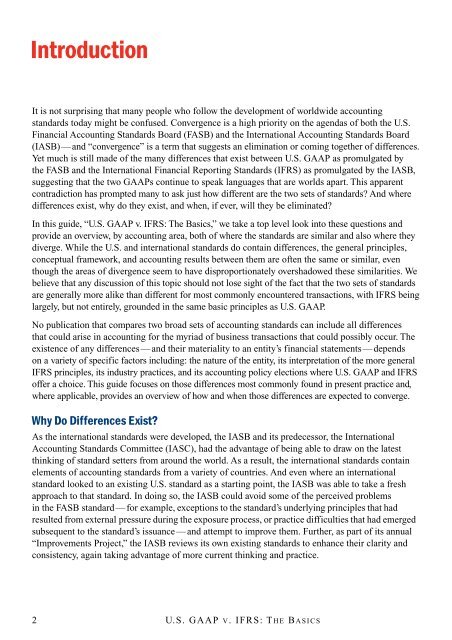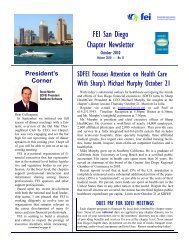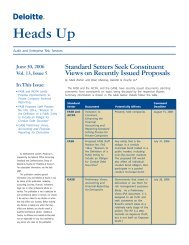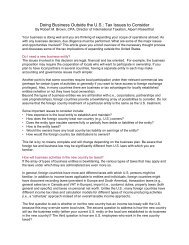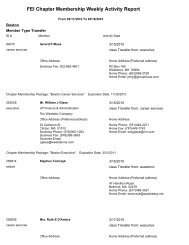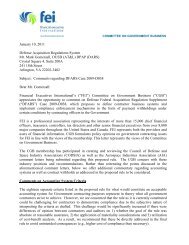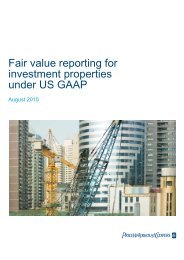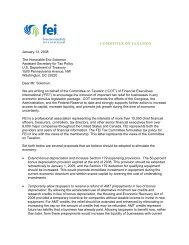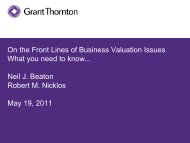U.S. GAAP v. IFRS: The Basics - Financial Executives International
U.S. GAAP v. IFRS: The Basics - Financial Executives International
U.S. GAAP v. IFRS: The Basics - Financial Executives International
You also want an ePaper? Increase the reach of your titles
YUMPU automatically turns print PDFs into web optimized ePapers that Google loves.
Introduction<br />
It is not surprising that many people who follow the development of worldwide accounting<br />
standards today might be confused. Convergence is a high priority on the agendas of both the U.S.<br />
<strong>Financial</strong> Accounting Standards Board (FASB) and the <strong>International</strong> Accounting Standards Board<br />
(IASB) — and “convergence” is a term that suggests an elimination or coming together of differences.<br />
Yet much is still made of the many differences that exist between U.S. <strong>GAAP</strong> as promulgated by<br />
the FASB and the <strong>International</strong> <strong>Financial</strong> Reporting Standards (<strong>IFRS</strong>) as promulgated by the IASB,<br />
suggesting that the two <strong>GAAP</strong>s continue to speak languages that are worlds apart. This apparent<br />
contradiction has prompted many to ask just how different are the two sets of standards? And where<br />
differences exist, why do they exist, and when, if ever, will they be eliminated?<br />
In this guide, “U.S. <strong>GAAP</strong> v. <strong>IFRS</strong>: <strong>The</strong> <strong>Basics</strong>,” we take a top level look into these questions and<br />
provide an overview, by accounting area, both of where the standards are similar and also where they<br />
diverge. While the U.S. and international standards do contain differences, the general principles,<br />
conceptual framework, and accounting results between them are often the same or similar, even<br />
though the areas of divergence seem to have disproportionately overshadowed these similarities. We<br />
believe that any discussion of this topic should not lose sight of the fact that the two sets of standards<br />
are generally more alike than different for most commonly encountered transactions, with <strong>IFRS</strong> being<br />
largely, but not entirely, grounded in the same basic principles as U.S. <strong>GAAP</strong>.<br />
No publication that compares two broad sets of accounting standards can include all differences<br />
that could arise in accounting for the myriad of business transactions that could possibly occur. <strong>The</strong><br />
existence of any differences — and their materiality to an entity’s financial statements — depends<br />
on a variety of specific factors including: the nature of the entity, its interpretation of the more general<br />
<strong>IFRS</strong> principles, its industry practices, and its accounting policy elections where U.S. <strong>GAAP</strong> and <strong>IFRS</strong><br />
offer a choice. This guide focuses on those differences most commonly found in present practice and,<br />
where applicable, provides an overview of how and when those differences are expected to converge.<br />
Why Do Differences Exist?<br />
As the international standards were developed, the IASB and its predecessor, the <strong>International</strong><br />
Accounting Standards Committee (IASC), had the advantage of being able to draw on the latest<br />
thinking of standard setters from around the world. As a result, the international standards contain<br />
elements of accounting standards from a variety of countries. And even where an international<br />
standard looked to an existing U.S. standard as a starting point, the IASB was able to take a fresh<br />
approach to that standard. In doing so, the IASB could avoid some of the perceived problems<br />
in the FASB standard — for example, exceptions to the standard’s underlying principles that had<br />
resulted from external pressure during the exposure process, or practice difficulties that had emerged<br />
subsequent to the standard’s issuance — and attempt to improve them. Further, as part of its annual<br />
“Improvements Project,” the IASB reviews its own existing standards to enhance their clarity and<br />
consistency, again taking advantage of more current thinking and practice.<br />
2 u.s. gaaP v. iFrs: t h E <strong>Basics</strong>


